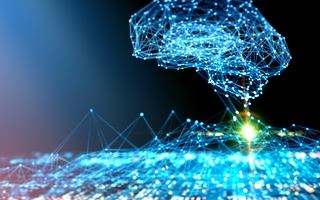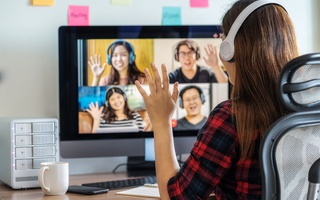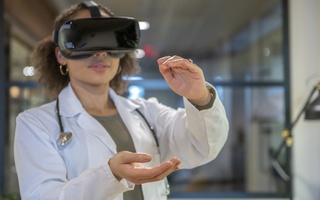The proliferation of surveillance cameras generating an ever-increasing volume of footage would make little sense in the absence of computers. Why is that? Simply because the attention level of a person watching images from two cameras drops by 90% in a mere 20 minutes. This is where computer vision comes in.
What is computer vision?
The term is directly related to concepts such as artificial intelligence, machine learning and deep learning. The system receives visual information, analyzes it, and produces results thousands of times faster than humans could. This is made possible by deep learning based on neural networks.
Why do we need it?
The first thing that comes to mind is probably security. Computer vision can identify a suspect by a photo, track his or her actions, spot theft by visitors or staff, and even detect potentially dangerous situations up to and including hostage-taking in real time.
There is much more to computer vision, however. You can use it to monitor cashiers and lineups, enforce social distancing, control product quality and the arrangement of goods on display, spot empty spaces on store shelves and even increase customer loyalty.
Theft prevention and greater customer loyalty
People who steal usually do it more than once. Computer vision systems analyzing the video stream from store cameras are able to identify and remember suspicious visitors, instantly notifying security whenever they show up.
Along with models based on face detection, there are more sophisticated platforms that can recognize facial expressions, gestures and body language. For example, they can respond to abnormal behavior such as fidgeting, looking at the door, taking steps that are unusually large, and much more.
Currently, such systems are being tested or have already been installed at some major retail chains in Russia.
The same system can recognize loyal customers and tell their names to the cashier or provide automatic discounts without a store card.
Monitoring cashiers
Another scenario of using computer vision in retail is monitoring the activity of cashiers to prevent theft or promptly notice any mistakes they could make.
A camera mounted over the cash register transmits video to the system for analysis and detection of irregularities.
The system registers purchases passing the barcode scanner and sends alerts as needed. It can also collect sales statistics, count the number of customers and do many other things.
Lineup management
This scenario improves the quality of service by detecting the number of people lining up to each cash register, so customers can be directed to less busy cashiers or more cash registers can be opened.
In addition, such systems can estimate the number of people in line with carts, shopping baskets or goods in their hands and calculate the wait time. Once it exceeds a certain limit, store personnel receive an alert.
This technology has already been used, for example, by Perekrestok, a supermarket chain, where it has cut customer complaints in half and increased the number of checks per cash register by almost 10%.
Product quality control
There is still another way of using computer vision. The system can learn to recognize spoiled food or compromised packaging. This translates into automatic quality control when good are received, moved, placed on store shelves or put on display.
Detection of empty spaces on store shelves
An empty store shelf or display case means a waste of valuable space. With a computer vision system that recognizes such situations, the empty space can be promptly restocked.
What's next?
Computer vision offers many further opportunities to retailers. For instance, systems that control social distancing and mask/gloves wearing by shoppers and staff are particularly relevant nowadays. Large supermarket chains such as Perekrestok, Pyaterochka, Billa and others are already relying on various systems based on AI-powered computer vision, and many large retailers will likely follow suit in the near future. This technology appears to have fantastic prospects.









